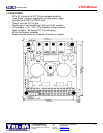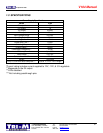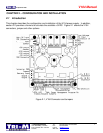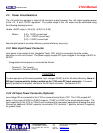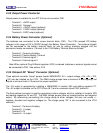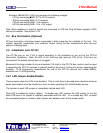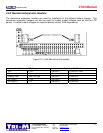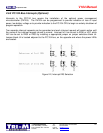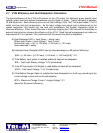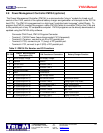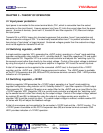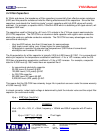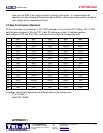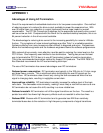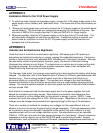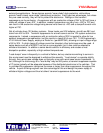
12 September 2006 V104 Manual
Tri-M Engineering Tel: 800.665.5600, 604.945.9565
1407 Kebet Way, Unit 100 Fax: 604.945.9566
Port Coquitlam, BC V3C 6L3 E-mail: info@tri-m.com
Canada Web site: www.tri-m.com
13
2.7 V104 Efficiency and Heat Dissipation Calculation
The typical efficiency of the V104 is 80 percent for the +5V output, but efficiency at any specific input
voltage, output load and ambient temperature may be higher or lower. Typical efficiency is between
70 and 85 percent. Best efficiency occurs at mid input voltage (16 to 18V), mid output loads (10 to 18
watts) and low heat sink temperature. As the input voltage and output load is determined by the
system application, this leaves only the heat sink temperature that System Integrators adjust to
maximize efficiency. Either forced flow fans or thermally coupling the V104 heat sink to enclosures or
external heat sinks can improve the efficiency of the V104. Good thermal management can obtain an
improvement of 3 to 4 percent. The results are that 35 percent less heat is dissipated.
A) Heat Dissipated (HD) = Input Power – Actual Load
Where Input Power = Input Voltage * Input Current
And Actual Load = +5V +(+12V load) + (-5V load) + (-12V load)
(load measured in watts).
B) Estimated Heat Dissipated (ESD) can be calculated based on 80 percent efficiency:
EHD = {+ 5V load + [(+12V load) + (-5V load) + (-12V load)]/0.8} * 0.2
C) If the Battery Input option is installed additional heat will be dissipated.
BID = Total Load/ Battery Voltage *0.7V (diode drop)
D) If the AC Input option (full bridge) is used additional heat will be dissipated.
ACID = Total Load/ Voltage *1.4 V (2 diode drop)
E) If the Battery Charger Option is installed the heat dissipated from it will vary according to the
current charge current and can be estimated by:
BCD = Maximum Charge Current * charge Voltage * 0/1
(based on 90 percent efficiency).



